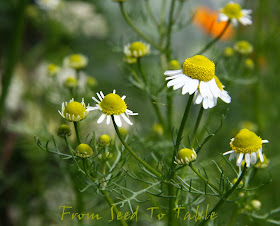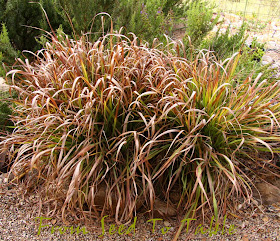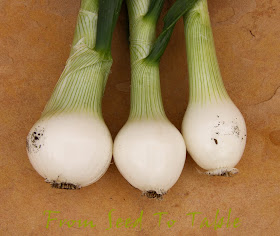It's been another week of eating onions, the Superstar and Candy onions have accelerated the pace of pushing flower stalks skyward and I've been pulling them apace.
 |
| Candy onions |
They clean up very nicely. I trim them down like this before I weigh them. I'm experimenting with a different way to preserve onions. The bulbs from this bunch were thickly sliced and grilled, then I tossed the soft onions with salt and champagne vinegar, packed them in sterilized canning jars, topped each jar with olive oil and put them in the refrigerator. This method worked very well with sweet peppers last year so I hope it works with the onions. They should keep at least a couple of weeks, but hopefully longer.
Some of the fennel is trying to bolt, others are forming bulbs, either way I need to pick the pace of harvesting it. These are straight from the garden but I trim the tops down before I weigh it.

On the other hand, I use every bit of the chard. I'm playing around with a new method of cooking chard, new to me at least - grilling. I cut the stems from this bunch and cut them into thick diagonal slices, then stir fried them on the barbecue in my grill basket with thick slices from the onion stems. Those were served with a simple seasoning of salt, pepper, and vinegar. I grilled the greens also, each leaf was drizzled on one side with a bit of olive oil and then laid directly on the grill until they wilted and started to get brown spots. As each leaf came off the grill I put them into a bowl and then the bowl of leaves was seasoned like the stems and I served them together. I harvested some Flamingo and Peppermint stick chard later in the week and grilled those on my ridged stove top griddle. That time I cut the stalks into about 8-inch lengths, split the largest ones, and grilled them slowly with a bit of olive oil until they were tender and browned a bit. Then I turned up the heat and grilled the leaves like I did on the barbecue. It's a nice change of pace from sauteed chard and I'm going to continue to play around with the concept and try some different seasonings.

The old pea shoot plants continue to put out new shoots.
Ah, the fava harvest is winding down. This is almost the final harvest of beans. I've pulled out about half the plants now and have been gleaning the last of the beans as I go.
There have been more beans than we can consume fresh so I've got about 3 pounds of peeled beans in the freezer, each one in 8 ounce portions which is just enough to make a batch of my husband's favorite fava dip.
More onions, these were a couple of the remaining onions that I had planted to pull as "spring" onions, but they want to bloom also. In the center is a young Inchelium Red stalk of garlic. It's a bit too developed to classify as green garlic, but most of the green stalk is still edible and tasty. I used one of the onions and some of the garlic to make my rendition of a dish of Clams, Green Garlic, and Favas from Suzanne Goin's book
The AOC Cookbook. I love her cooking, she uses many fresh ingredients that I grow in my garden and I often find inspiration from her books.
Yet more blooming (nearly) onions, these were harvested on Sunday.
 |
| Superstar and Candy onions |
This bunch of onions got trimmed down like the previous bunch and then I sliced the bulbs, but this time I slow cooked them in a huge saute pan with some butter and olive oil and a bundle of thyme, pepper, and fresh bay leaves. They cooked down to a slightly caramelized soft sweet mess that was fraction of the previous volume. I used most of those to make individual crustless quiches. Whoa, what a great way to use up a big bunch of onions.
There has been carnage in the beet patch. The effing rats, at least one effing rat, I hope it's only one and not a whole gang, discovered my beets.
I pulled everything out and salvaged what I could. No more fresh beets for a while. At least I have their replacements already started, I just need to get them planted out and I obviously need to give the next lot more security.
My two little potted blueberry bushes provided a nice little treat. I have to keep them secure also, as soon as the berries start to show a little color the birds start to munch. I don't know how many berries I lost before I realized the berries weren't slow to ripen, they were disappearing before they ripened. The bushes are now enveloped in a rather unattractive tent of row cover fabric.
The only other harvests this week that were not photographed were more capers, lots of capers (for me), we had very warm weather last week with highs in the low 90ºF's and the capers loved it. One other harvest not photographed was a big basketful of chamomile blossoms which will be weighed when they are dry, the chamomile in the tally this week was harvested last week.
Here's the harvests for the past week:
Chioggia beets - 1 lb., 3.3 oz.
Golden beets - 15 oz.
Red Baron beets - 1 lb., 4.5 oz.
Capers - 9.3 oz.
Extra Precoce Violetto fava beans - 9 lb., 4.9 oz.
Chamomile, dried - .9 oz.
Flamingo chard - 15.5 oz.
Golden chard - 1 lb., 9.1 oz.
Peppermint Stick chard - 10.8 oz.
Romanesco fennel - 1 lb., 14.7 oz.
Inchelium Red green garlic - 5.4 oz.
Spring onions - 15.2 oz.
Candy onions - 11 lb., 1.4 oz.
Superstar onions - 4 lb., 8.7 oz.
Pea Shoots - 3.5 oz.
The total harvests for the past week came to - 35 lb., 10.2 oz.
Which brings the total harvests for 2014 up to - 225 lb., .6 oz.
Harvest Monday is hosted by Daphne on her blog
Daphne's Dandelions, head on over there to see what other garden bloggers have been harvesting lately.




















































